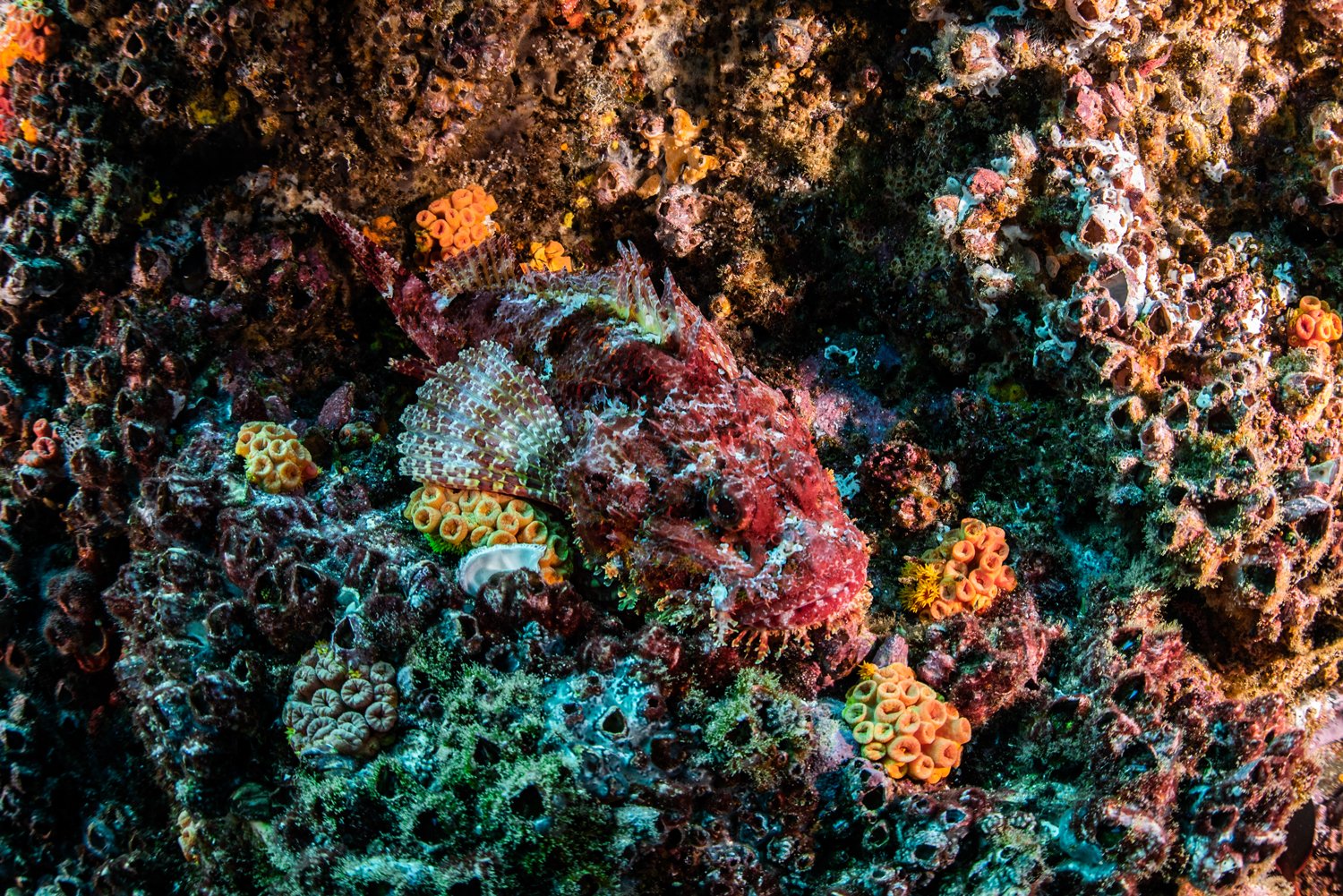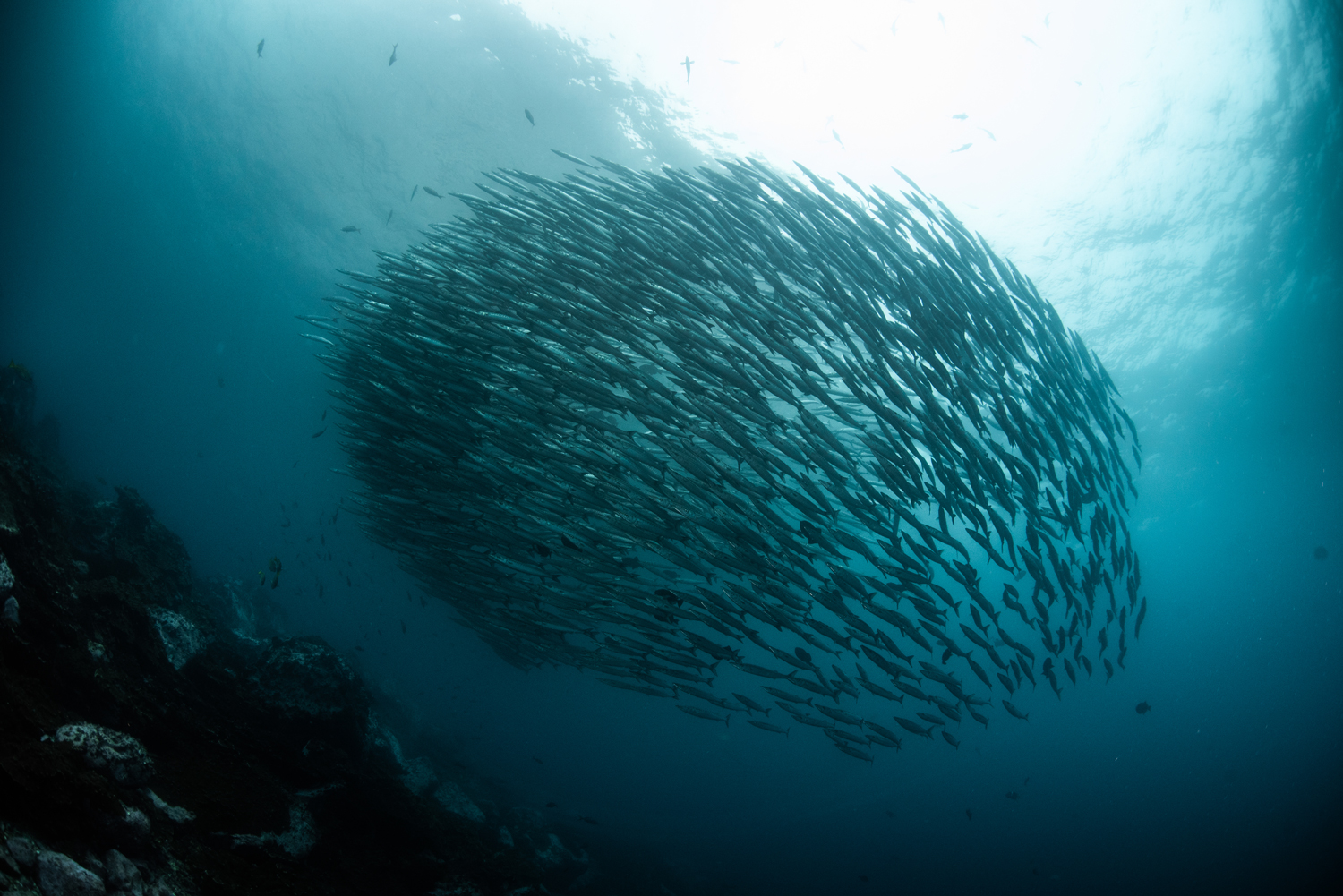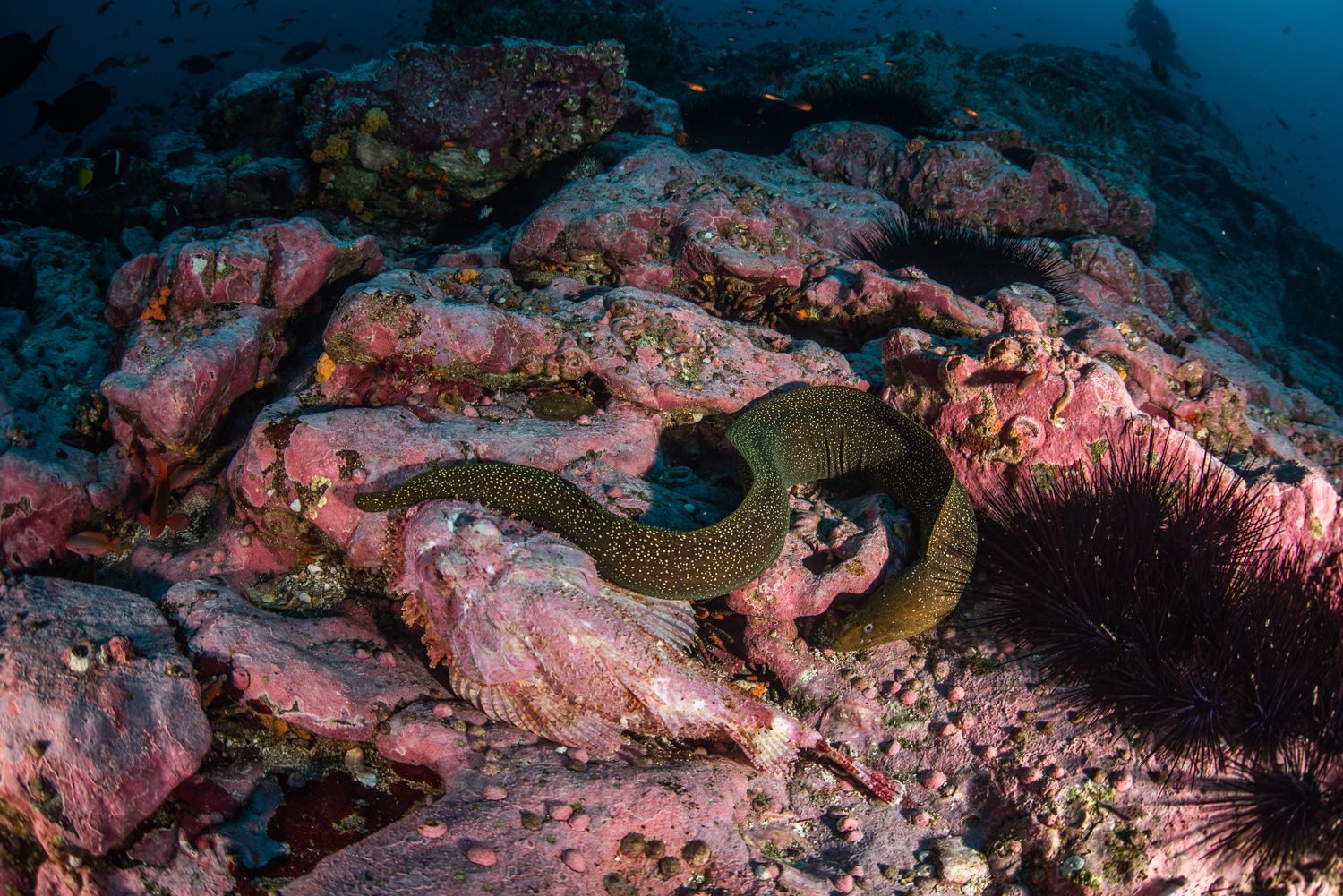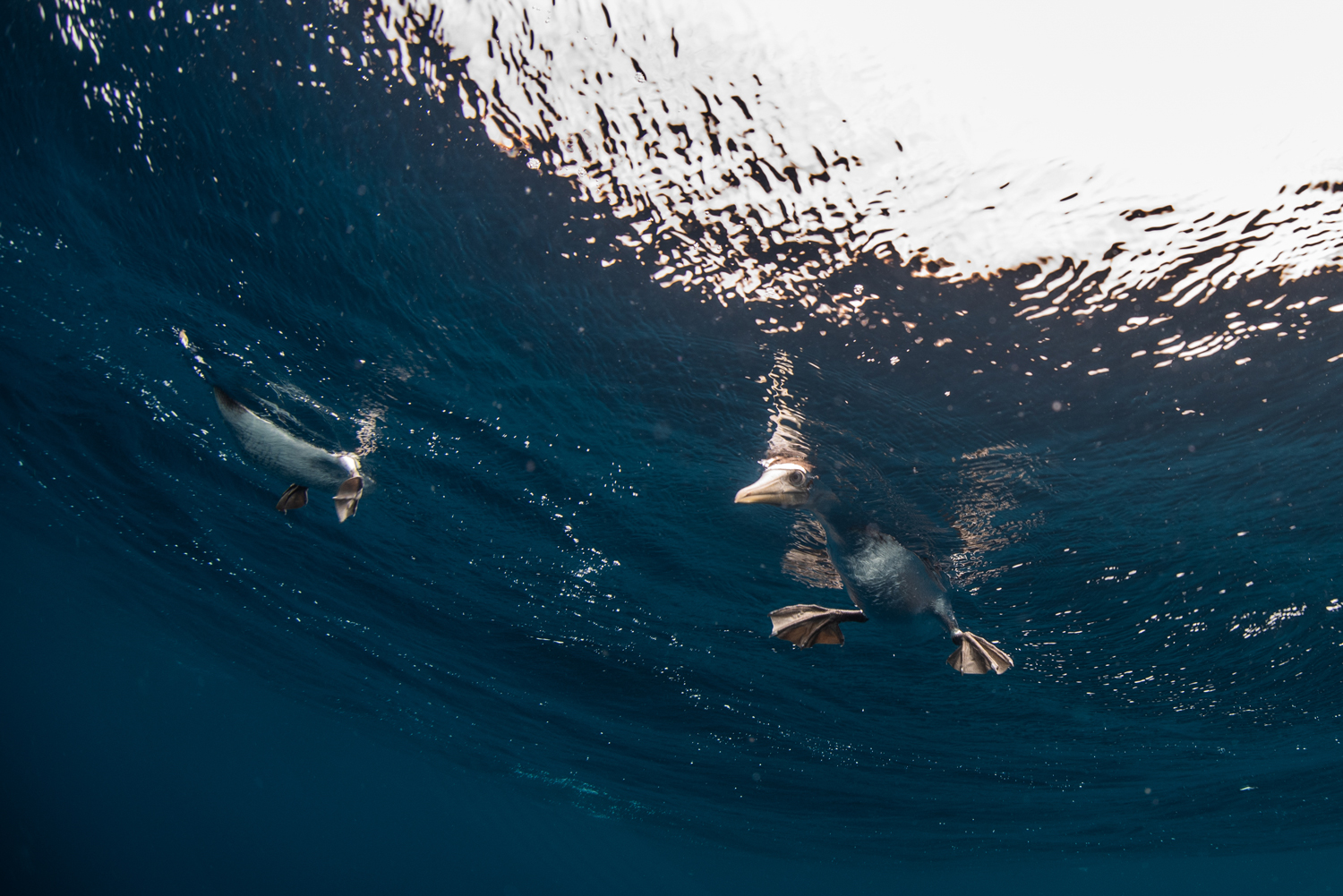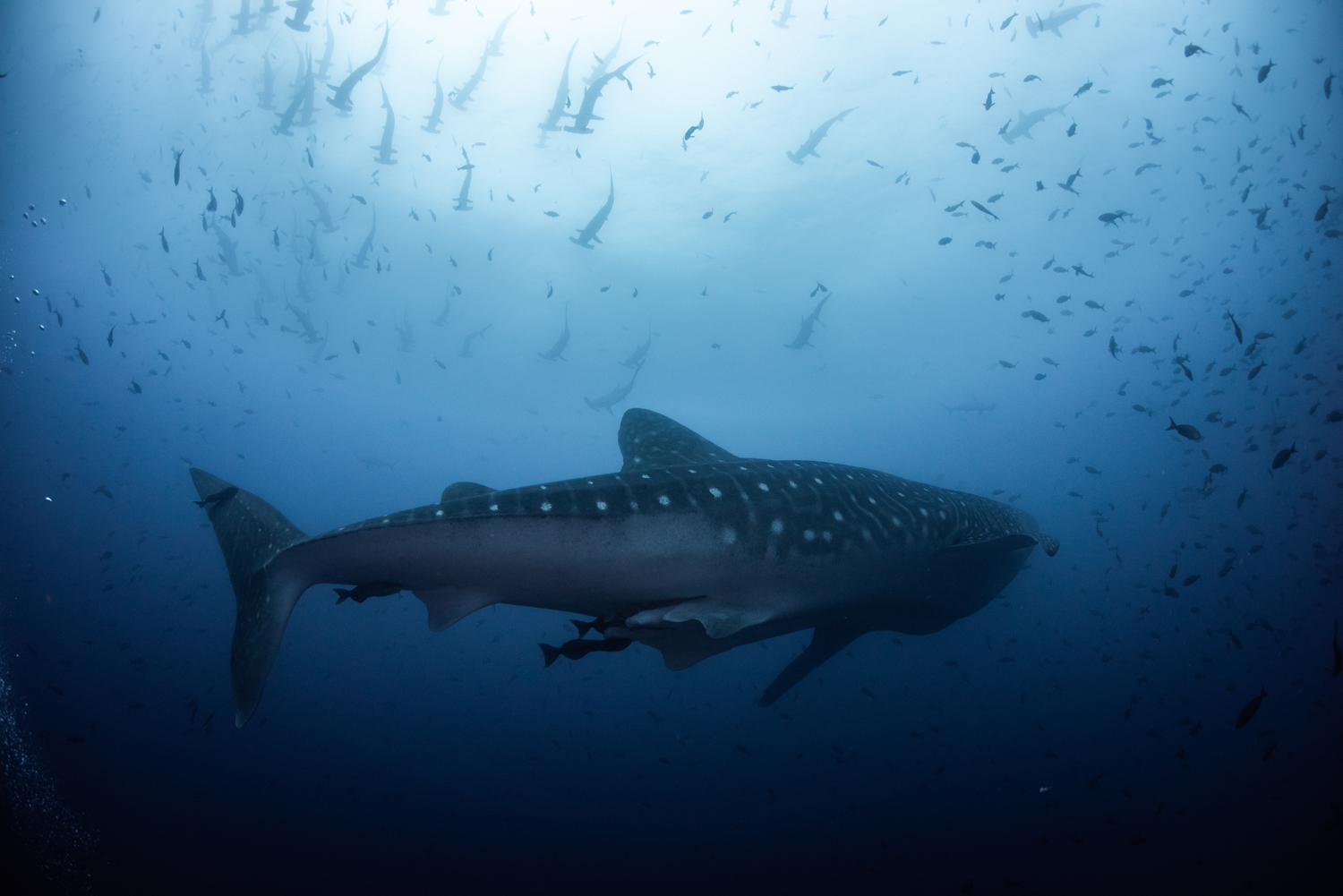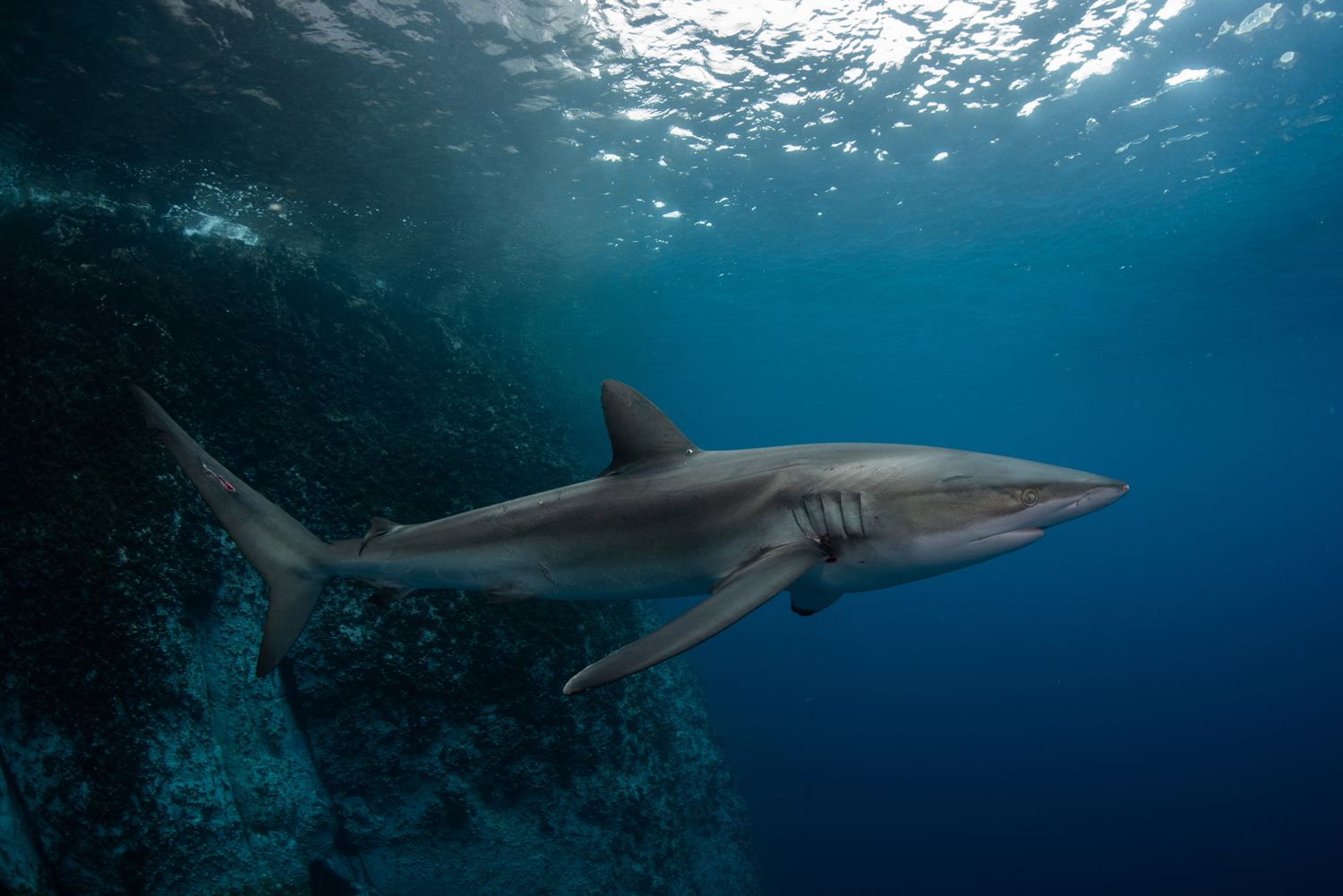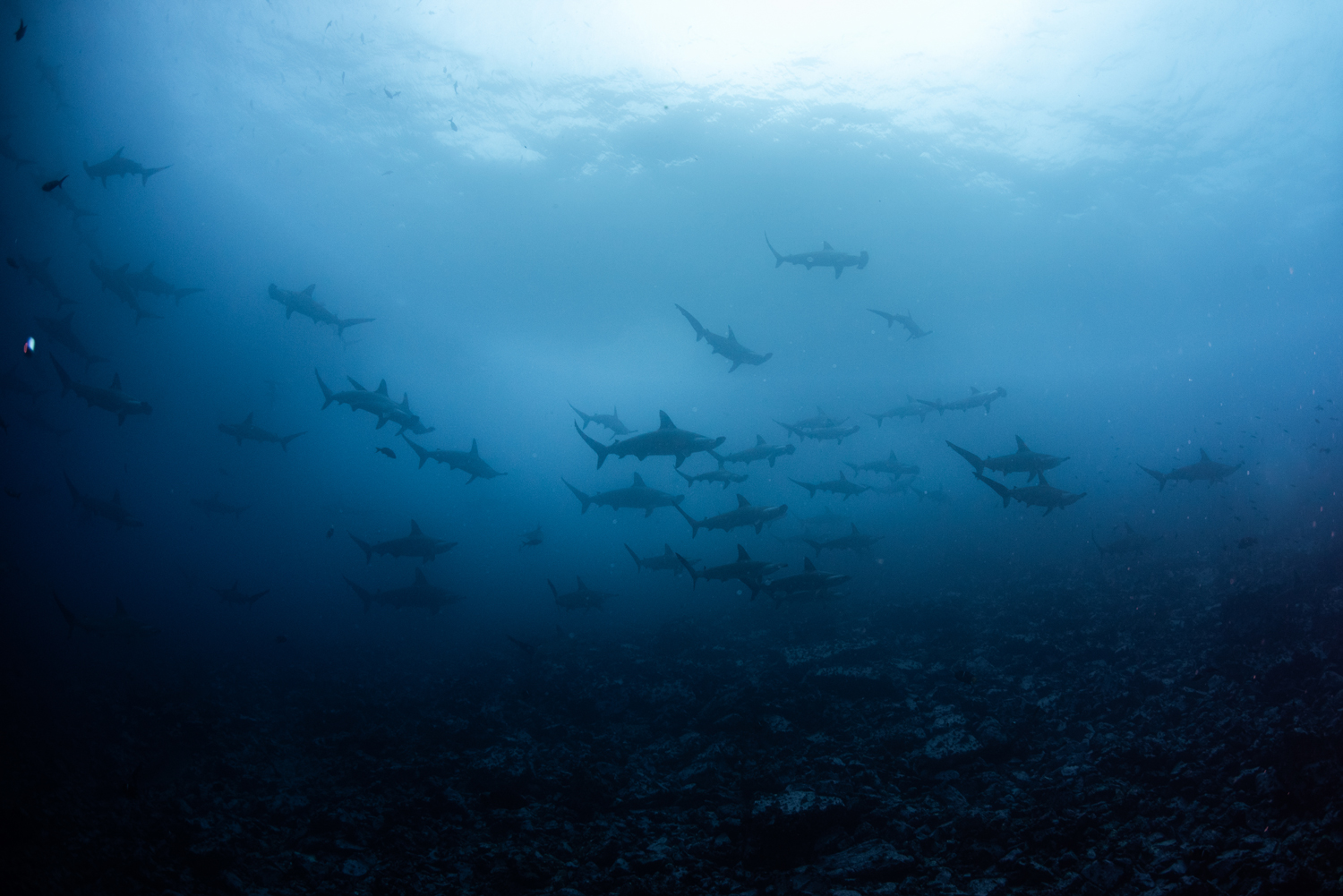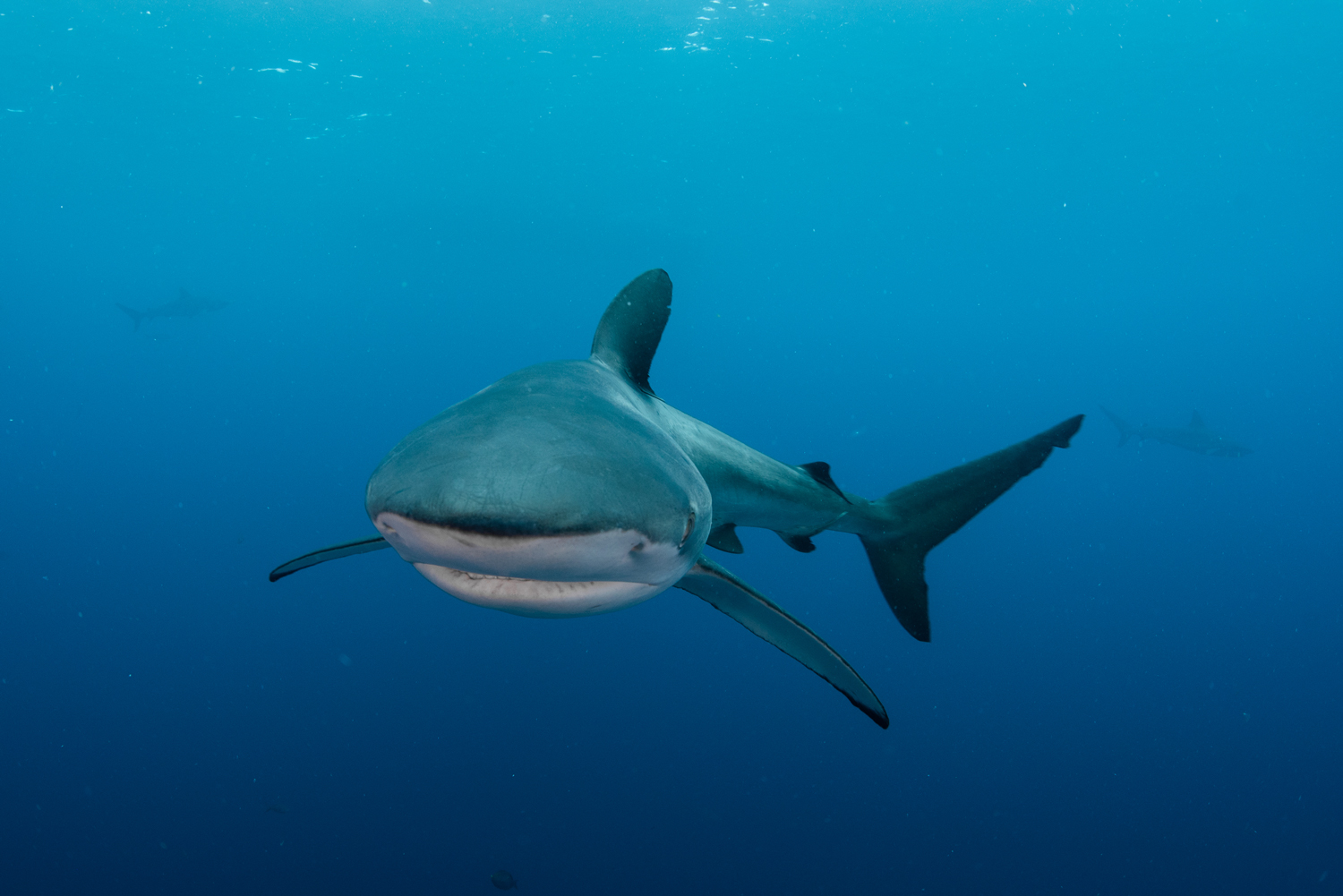Winning back wilderness
Colombia has surpassed the 30×30 (30% ocean protection by the year 2030) goal, eight years ahead of schedule. The target was achieved by expanding the Malpelo Fauna and Flora Sanctuary and creating four new marine protected areas, which also protect important sea mount habitats. Save Our Seas Foundation project leader Sandra Bessudo leads the team that conducts and supports monitoring, enforcement and education in this extraordinary ocean protected area.
Malpelo Island seems innocuous enough, its rocky peaks rising above the sea’s surface in the eastern Pacific Ocean roughly 500 kilometres (310 miles) off the port of Buenaventura. But there are some places on this planet so extraordinary that people agree that they merit special recognition and protection. At a dinky 1.64 kilometres (one mile) long and 727 metres (2,385 feet) across, Malpelo is certainly small and remote in a great ocean expanse. It serves as a military post for the Colombian armed forces, but is home to no other human inhabitants. At a first cursory glance it seems to merit no particular attention but, like anything astonishing, its real value lies in the unexpected.
An aerial view of Malpelo Island. Photo © Matthew During
Running for 300 kilometres (186 miles) along the ocean floor from which Malpelo rises is the Malpelo Ridge, a raised extension of the Nazca Plate off Colombia’s Pacific coast. The sea floor in this part of the world is an undulating wilderness of caves and cliffs, tunnels and sharp walls that plunge to a depth of 4,000 metres (13,123 feet). The sheer complexity of the ocean landscape gives rise to different habitats – and consequently a stunning array of marine species. Hammerhead, silky and whale sharks aggregate here and groupers, billfish and tuna cruise the waters around the island. And it is here that Save Our Seas Foundation project leader Sandra Bessudo and her team from the Malpelo and Other Marine Ecosystems Foundation (Fundación Malpelo Colombia – Promovemos la protección en el Santuario de Fauna y Flora (SFF) Malpelo), together with the Colombian government, national parks and partners from other organisations, are working to secure one of the world’s largest marine wilderness areas on the planet.
An extraordinary ocean ecosystem
The Malpelo Fauna and Flora Sanctuary (Malpelo Fauna and Flora Sanctuary – UNESCO World Heritage Centre) was declared a marine protected area in 1995. Termed a fauna and flora sanctuary by the Colombian authorities, the region was incorporated into Colombia’s national natural parks system and encompasses Malpelo Island and its surrounding ocean. Sandra Bessudo, the director of the Malpelo and Other Marine Ecosystems Foundation, has long been an active advocate for the designation and expansion of marine protected areas and has played an integral role in guiding the declaration of the Malpelo Sanctuary. ‘We run several programmes at the Malpelo Foundation,’ she says, ‘but one of our key actions is to push for increases in marine protected area coverage.’
Scalloped hammerhead sharks swim through the newly protected waters as the waves overhead crash into the rock formations shouldering the island. Photo © Matthew During
Understanding how the Malpelo marine protected area is connected to other marine protected areas in the Eastern Tropical Pacific is critical to informing the design and expansion of the existing protected area. If Malpelo offers only fleeting protection to sharks while they visit, we need to understand where else they go so that they can be managed throughout their range. ‘Our monitoring research work has shown that groupers have recovered at Malpelo. As have snappers and bonitos. These important predators are present in abundance,’ says Sandra of the emerging data that are the result of years of her monitoring work in the region. ‘It’s different for sharks though,’ she cautions. ‘We’ve seen declines in silky and hammerhead sharks. These are highly migratory species and they are at risk when they’re outside marine protected areas.’ The question is, at risk from what? And where? ‘Although Colombia has banned all trade in shark products, illegal exports go to other countries in the region. We have to work together at a larger regional scale to protect sharks.’
The third programme within the Malpelo Foundation’s structure is about sharing the awe that can be found underwater with a wider, appreciative audience. ‘We help to support sustainable and responsible diving tourism,’ explains Sandra. ‘We maintain diving buoys and moorings for boats. Malpelo is challenging to work in because it’s remote, there are strong currents and the water is deep. But it is vital to make sure that diving around Malpelo is responsible if we are to ensure that the biodiversity is respected and protected.’ Her aim is to promote tourism and interest in Malpelo. With sufficient support, she and her team can spread awareness of its importance and promote education. To do this, they raise funds and run communication and education programmes.
Malpelo marine biodiversity
A record of life: research and monitoring in the Malpelo Fauna and Flora Sanctuary
Sandra and her team have been working to document the life around Malpelo, gathering a baseline indication of what is there and then tracking population trends to form a long-term vision of how the region is faring. This is where she becomes most animated in our conversation. ‘It’s full of life!’ she exclaims. ‘Endemic terrestrial species, birds, unbelievable marine biodiversity underwater.’ The Malpelo Foundation team, its partners and collaborators monitor corals, pelagic fish, sharks, plankton, marine mammals, turtles and seabirds and also keep tabs on the oceanography. ‘We must be on a live-aboard boat: we eat, sleep and research from the same vessel. We do short day trips around Malpelo on a smaller Zodiac to access some of our sampling sites. We typically stay 8–10 days per trip, but our last trip lasted a whole month!’
Coverage of such a vast array of taxonomic groups relies on Sandra and her team connecting with universities and other academic and NGO partners. Specialists with expertise in particular groups help to tease apart the bewildering web of life that is threaded through the waters here. ‘In the beginning, we started working primarily with sharks and rays.’ This, explains Sandra, is her team’s particular focus and speciality. ‘But wherever we go deeper or into new areas, we find new information. Corals, fish and, of course, sharks and rays. We’ve started moving into deeper water in the past two years, with help from other institutions and using specialised equipment like a submersible.’
As her research programme progresses this year, now with added support from the Save Our Seas Foundation, Sandra’s choice of sampling techniques is strategic. Remotely operated vehicles and baited remote underwater video systems are non-extractive methods that document marine biodiversity on film and in photographs that can be archived and then revisited to understand long-term changes. Sandra is emphatic about working sensitively and sustainably in this World Heritage Site.
Shark biodiversity
Other sampling techniques are enabling them to make wider connections, illuminating insights across the ocean basin at a scale that makes for daunting but exciting prospects. ‘We are connecting this information to the coast,’ says Sandra. ‘We have found corals at the coast that are also present in small areas of Malpelo. We are looking at where sharks are moving. In the future, we need to do genetics – but all of this takes time to get working, because it is all new!’ Underwater visual census dive surveys and acoustic tracking round out a very ambitious research monitoring programme. But ambition is necessary to make things work at Malpelo. And perhaps the wonder of aggregating whale sharks, scores of silky sharks and life dazzling enough to satisfy the most curious mind is lure enough to shrug off the challenges of 36-hour boat trips and pioneering sampling techniques in new habitats.
Innocuous Malpelo Island certainly is not: it is instead something of a metaphor. With its craggy peaks a mere pinprick in a tropical ocean, it is only by diving below the surface that the real wealth of this region can be understood: the quintessential iceberg analogy. Patience, dedication and a commitment to the future are what keep people working here. What we know already of Malpelo and its rich waters has won it recognition as a World Heritage Site and a Hope Spot. Equipped with continued support, new technologies and innovative survey techniques, hope is at the heart of what we might learn from the research in this last great wilderness.


